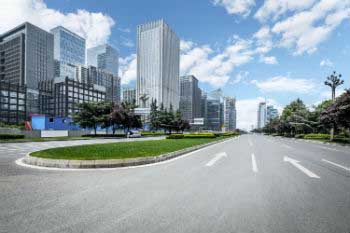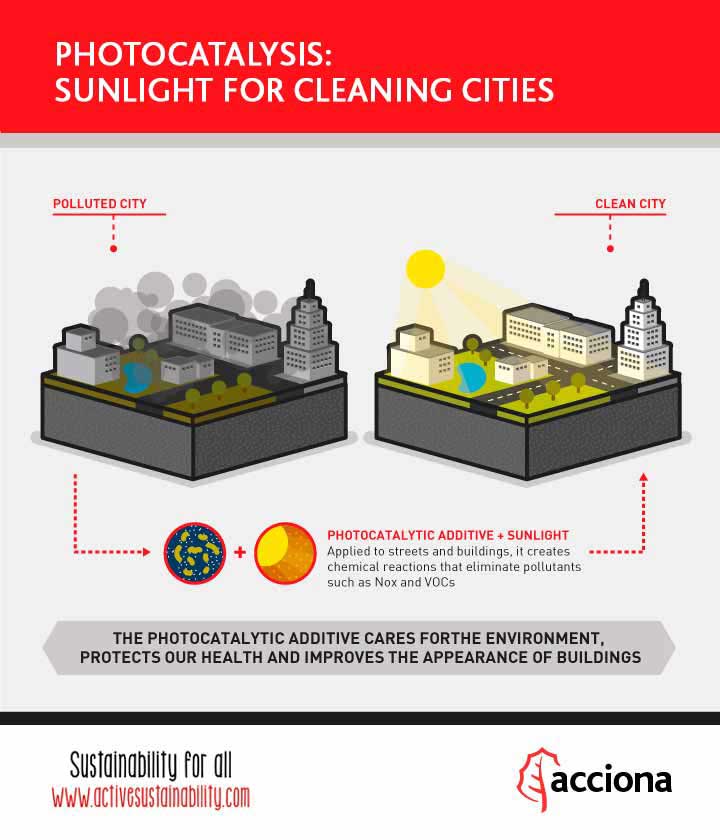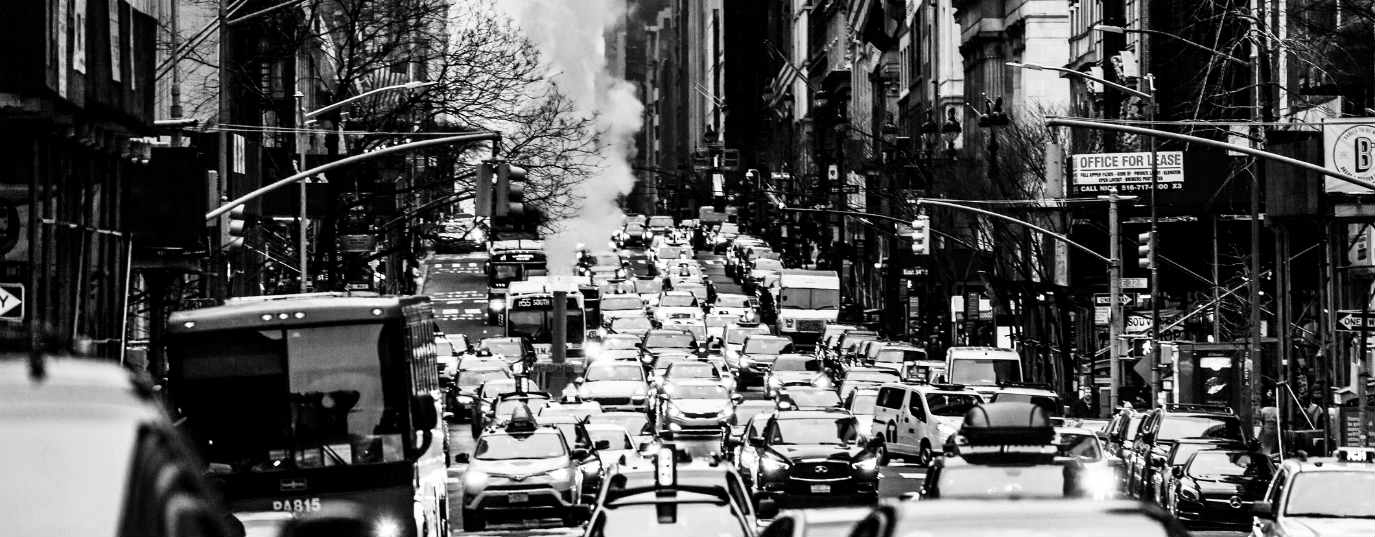Photocatalysis: sunlight for cleaning cities
A natural principle can be key in the fight against pollution in cities. Do you want to know how it works?Guest post written by José María Castrillón Montes from ACCIONA Construction
Over half the earth’s population -54%- live in urban centers. Notwithstanding, the UN forecasts that this figure will increase to 66% in 2050, which means more than 6 billion people will be living in cities in less than 35 years’ time. This overcrowding in metropolitan areas heralds a potential global pollution problem that, if not treated soon, will result in serious risks to the health of everyone.

One solution to the problem that has been proposed lies in the use of decontaminating materials.
What are decontaminating materials?
A decontaminating material is one that, after being treated through the natural phenomenon called photocatalysis, is able to eliminate the contamination in its environment.
To understand how these decontaminating materials function, you first have to understand photocatalysis.
What is photocatalysis?
Photocatalysis is the natural principle of decontamination of the surrounding environment. Like photosynthesis, which thanks to sunlight it is able to eliminate CO2 to generate organic material, photocatalysis eliminates other contaminants in the atmosphere, such as NOx, SOx and volatile organic compounds (VOCs), through a process of oxidation activated by solar energy.
Photocatalysis is a photochemical reaction that converts solar energy into chemical energy on the surface of a catalyst or substrate consisting of a semiconductor material that accelerates the speed of the reaction. During the process, both oxidation and reduction reactions take place. In this way, most of the pollutants in cities can be eliminated.
Properties acquired by materials treated with photocatalysis
From the environmental viewpoint, these materials are able to:
- Reduce concentrations of NOx (nitrogen oxides) emitted by traffic, as well as those of volatile organic compounds (VOCs), i.e. reduce the atmospheric pollution of a city. Nitrogen oxides are the most polluting agents present in air, contributing to form acid rain and accentuating global warming and climate change, as well as being harmful to health.
- Reduce, when applied to bituminous surfaces, the ability of pavement surfaces to heat up, thus cooling temperatures in the city.
- Reduce the ability of dust particles to adhere to surfaces, so that their cleaning and elegance last longer.
- Reduce smells due to inbuilt resistance to particles and organic substances adhering to the surface.
- Eliminate bacteria and fungi, by acting against microbes attacking the surface, thanks to the oxidizing power of the photocatalyst.
Application of photocatalysis in cities
Cement is one of the first materials on which this method has been tested successfully. Indeed, cement is the perfect medium for its diffusion. Combining titanium dioxide with cement, it is possible to obtain an agglutinant that, as well as having the traditional characteristics of mechanical resistance and durability, when associated with the photocatalytic properties of the substrate permits the cement to oxidize the organic and inorganic pollutants deposited on its surface.
The application of photocatalytic substances to roads and pavements, façades, coatings and other urban layers, does not only have a proven decontaminating effect, they can also significantly reduce maintenance and cleaning costs, given that photocatalytic substances prevent the accumulation of dirt on surfaces better than those that have not been treated, as well as reducing foul smells thanks to the materials’ anti-bacterial nature.
José María Castrillón Montes
Technical Project Manager. Marketing and Communication Department. ACCIONA Construction
Twitter profile: @JM_castrillon








